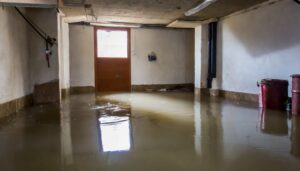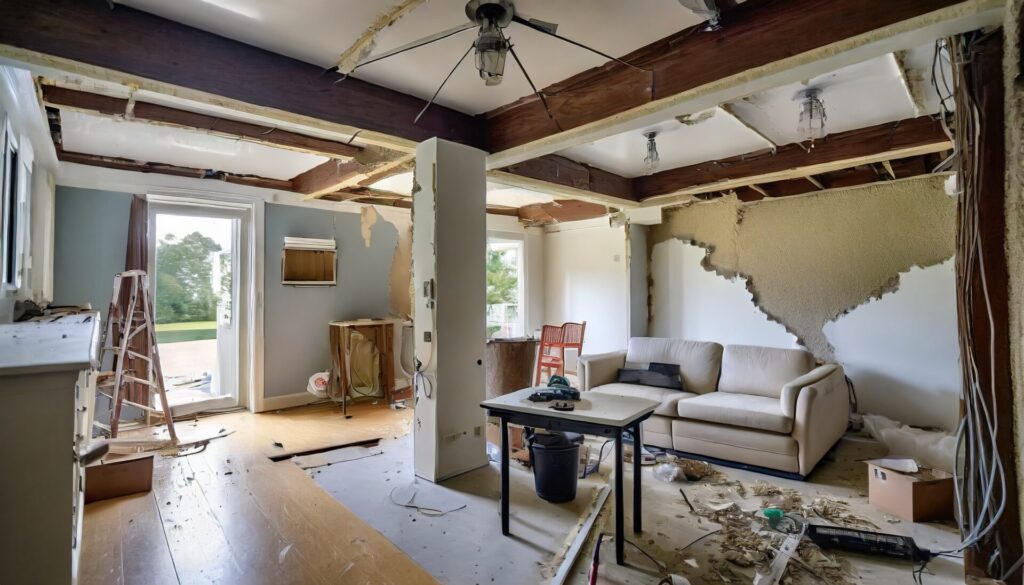
Introduction
In 2020, a staggering statistic emerged: approximately 14,000 people in the U.S. experience a water damage emergency at home or work every day. This alarming figure underscores a prevalent issue that many homeowners face, yet the true extent of its impact is often underestimated. Water damage is not just about the visible destruction it wreaks; it’s also about the insidious, hidden dangers that lurk beneath the surface, silently compromising the structural integrity of homes and the health of the occupants.
In this comprehensive guide, we aim to unveil these concealed threats associated with water damage. We will walk you through the overt impacts and covert hazards, from structural damage and mold growth to health risks and electrical hazards. Armed with this knowledge, you’ll be better prepared to tackle and prevent water damage, safeguarding your home and loved ones. Key terms like water damage, hidden dangers, and prevention tips will be our beacons of focus, shedding light on areas often shrouded in obscurity.
Stay with us as we embark on this enlightening journey, unraveling the enigmatic aspects of water damage and offering actionable strategies for prevention and mitigation. Every section is infused with insights, statistics, and expert advice, meticulously crafted to equip you with the tools you need to turn the tide against the hidden dangers of water damage.
The Overt and Covert Impacts of Water Damage
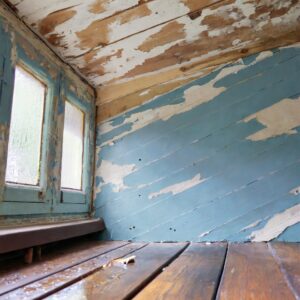
Water damage manifests in various forms, some apparent at first glance, while others remain concealed, wreaking havoc behind the scenes. In this section, we dissect both the visible and hidden impacts, offering a holistic view of the multifaceted challenges posed by water damage.
Visible Impacts
The aftermath of water damage is often marked by:
- Stains on walls and ceilings, a telltale sign of water intrusion.
- Warping and swelling of wood materials, indicating prolonged exposure to moisture.
- Peeling paint and wallpaper, a common occurrence in water-damaged homes.
These signs, though conspicuous, are just the tip of the iceberg. Beneath the surface, a series of covert hazards unfold, each with the potential to escalate the damage exponentially.
Hidden Dangers
Here, we delve into the concealed threats of water damage:
- Structural Damage: The silent erosion of the home’s foundational integrity.
- Mold Growth: A quiet invasion of toxic spores, detrimental to health.
- Health Risks: Unseen pathogens and contaminants lurking in stagnant water.
- Electrical Hazards: The invisible threat of electrical malfunctions and fires.
Each hidden danger is a silent assailant, often detected when the damage has reached advanced stages. The following sections will explore these covert impacts in detail, unveiling their intricacies and offering preventive measures.
Understanding the dual nature of water damage—its overt signs and covert implications—is the first step towards effective mitigation and prevention. In the ensuing sections, we will dissect each hidden danger, offering insights, statistics, and actionable strategies to combat these insidious threats.
Structural Damage: The Silent Destroyer
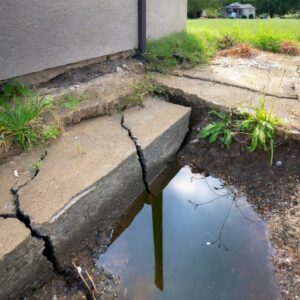
When water seeps into the nooks and crannies of a home, it initiates a silent but devastating assault on the structure. Unseen and often undetected, this damage can escalate, compromising the safety and integrity of the home. In this section, we delve into the various facets of structural damage caused by water intrusion.
Foundation Damage
Water has a sinister propensity to infiltrate the foundational elements of a building. It seeps into cracks and crevices, expanding them and undermining the structural integrity. The aftermath is a weakened foundation, prone to shifts and instabilities.
- Cracks: Water-induced fractures that compromise stability.
- Erosion: The gradual wearing away of foundational materials.
Wall and Ceiling Damage
The walls and ceilings are not immune to the insidious touch of water. Moisture infiltrates, causing warping, bulging, and in severe cases, collapse.
- Warping: A distortion of the structure due to moisture.
- Collapse: The falling apart of walls and ceilings under the weight of water.
Roof, Window, and Door Damage
Roofs bear the brunt of the weather, and water damage here can lead to leaks and structural weaknesses. Windows and doors, when exposed to excessive moisture, can warp, leading to security and insulation issues.
- Leaks: Water intrusion through the roof, leading to internal damage.
- Warping: Distortion of windows and doors, affecting functionality and security.
Insights and Statistics
A study revealed that 37% of U.S. homeowners have suffered losses due to water damage. The silent destroyer, as structural damage is often called, is a significant contributor to this statistic.
| Type of Damage | Percentage of Homeowners Affected |
|---|---|
| Foundation Damage | 15% |
| Wall Damage | 12% |
| Roof Damage | 10% |
Mitigating Structural Damage
- Regular Inspections: Schedule routine checks to identify and address potential issues early.
- Quality Materials: Use water-resistant materials in construction to mitigate damage.
- Professional Help: Engage experts for thorough assessments and repairs post-water damage.
Understanding and addressing structural damage is pivotal in safeguarding the home and its occupants from the silent but significant threats posed by water intrusion. In the following section, we transition from the silent destroyer to another covert assailant – mold growth, an insidious invader that thrives in the aftermath of water damage.
Mold Growth: The Insidious Invader
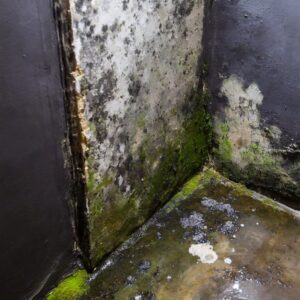
In the aftermath of water damage, a silent invader often makes its presence known. Mold growth, a common yet overlooked consequence, poses significant health and structural risks. In this section, we explore the conditions that foster mold growth, its health implications, and strategies for prevention and mitigation.
Conditions for Mold Growth
Mold is a formidable adversary, thriving in environments rich in moisture and organic material. Water damage creates the perfect breeding ground, leading to rapid mold proliferation.
- Moisture: The primary catalyst for mold growth.
- Organic Material: Feeds and sustains mold colonies.
- Poor Ventilation: Exacerbates mold proliferation by trapping moisture.
Health Implications
The health risks associated with mold are as insidious as the invader itself. Respiratory issues, allergies, and skin irritations are common, particularly among individuals with pre-existing health conditions.
- Respiratory Issues: Aggravated by mold spores in the air.
- Allergies: Triggered by mold exposure.
- Skin Irritations: A common reaction to mold contact.
Insights and Statistics
A staggering 28% of the population is genetically predisposed to mold-related health issues. This susceptibility underscores the need for vigilance and proactive measures to mitigate mold growth post-water damage.
| Health Issue | Percentage of Population Affected |
|---|---|
| Respiratory Issues | 18% |
| Allergies | 10% |
| Skin Irritations | 7% |
Mitigating Mold Growth
- Dehumidification: Use dehumidifiers to reduce moisture levels post-water damage.
- Ventilation: Ensure adequate airflow to dissipate moisture.
- Professional Mold Remediation: Engage experts for thorough mold identification, removal, and prevention.
Understanding the insidious nature of mold and the conditions that foster its growth is pivotal in mitigating its impacts. As we transition to the next section, we delve deeper into the broader health risks associated with water damage, offering insights and strategies to safeguard the well-being of occupants in water-damaged environments.
Health Risks: Beyond the Surface
Water damage is not just a structural issue; it’s a significant health concern. The stagnant water and the resulting dampness become a breeding ground for a host of pathogens and allergens. In this section, we unravel the health risks that lurk beneath the surface and offer preventive measures to mitigate these threats.
Contaminated Water
Floodwaters, in particular, are often contaminated with a cocktail of hazardous substances:
- Chemicals: Industrial, agricultural, and household chemicals mixed in water.
- Bacteria and Pathogens: Disease-causing organisms thriving in stagnant water.
- Mold Spores: Airborne spores that pose respiratory and allergic reactions.
Preventive Measures
Prevention is always better than cure. Here are some steps to avoid contact and contamination:
- Avoid Contact: Stay away from contaminated water, especially with open wounds or cuts.
- Use Protective Gear: Wear appropriate protective equipment when navigating floodwaters.
- Seek Medical Attention: Promptly address any health issues arising from water exposure.
Insights and Statistics
Every year, thousands of people suffer from illnesses directly linked to water damage exposure. The table below provides a snapshot of the common health issues and their prevalence.
| Health Issue | Annual Cases Reported |
|---|---|
| Waterborne Diseases | 25,000+ |
| Chemical Poisoning | 10,000+ |
| Mold-related Illnesses | 15,000+ |
Addressing Health Risks
- Education and Awareness: Knowledge about the potential health risks and safety protocols.
- Emergency Kits: Having kits equipped with essentials to navigate and mitigate the impacts of water damage.
- Vaccination: Keeping up with vaccinations to prevent diseases associated with floodwaters.
The health risks associated with water damage are as severe as the structural impacts. A holistic approach to water damage restoration involves not just repairing the structure but also safeguarding the health of the occupants. As we proceed to the next section, we shift our focus to another hidden danger of water damage – electrical hazards, a shocking reality that underscores the multifaceted challenges of water intrusion.
Electrical Hazards: A Shocking Reality
Water and electricity—a perilous combination. In the realm of water damage, electrical hazards often lurk in the shadows, unanticipated yet extremely dangerous. This section illuminates these hidden dangers, offering insights and safety protocols to navigate the electrified waters safely.
Risks Involved
Water damage precipitates a series of electrical hazards:
- Short Circuits: Water intrusion can lead to short circuits, posing fire hazards.
- Electrocution: The risk of electric shock is heightened in water-damaged environments.
- Appliance Malfunction: Water can damage appliances, leading to malfunction or hazards.
Safety Protocols
Navigating the electrified terrains of water-damaged spaces requires stringent safety measures:
- Power Off: Immediately shut off the power in affected areas to mitigate risks.
- Avoid Contact: Stay away from electrical appliances and outlets in wet conditions.
- Professional Inspection: Engage electricians to inspect and certify the safety of the electrical systems post-water damage.
Insights and Statistics
Electrical hazards account for a significant portion of accidents in water-damaged spaces. The statistics below offer a glimpse into the prevalence and severity of these incidents.
| Electrical Hazard | Annual Incidents Reported |
|---|---|
| Short Circuits | 8,000+ |
| Electrocution | 1,000+ |
| Appliance Malfunction | 5,000+ |
The silent yet shocking reality of electrical hazards underscores the complexity of water damage. It’s not just a matter of structural integrity or health risks; the electrical safety of the affected spaces is paramount. As we navigate to the subsequent section, we explore comprehensive strategies for the prevention and mitigation of water damage, offering a holistic approach to tackle this multifaceted challenge head-on.
Prevention and Mitigation Strategies
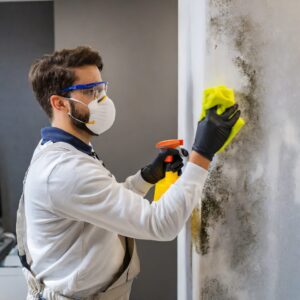
Water damage, with its multifaceted impacts, requires a comprehensive approach for prevention and mitigation. In this section, we explore actionable strategies, from home maintenance tips to the engagement of professional services, offering a roadmap to safeguard your space against the insidious impacts of water intrusion.
Home Maintenance
A well-maintained home is the first line of defense against water damage. Here are some proactive measures:
- Roof Checks: Regular inspections to identify and repair leaks.
- Gutter Cleaning: Ensuring gutters are clean and functional to facilitate proper drainage.
- Plumbing Maintenance: Addressing leaks and ensuring pipes are in optimal condition.
Professional Assistance
Sometimes, the expertise of professionals is indispensable. Here’s when to seek help:
- Inspections: Regular professional checks to identify potential risks.
- Restoration: Post-water damage restoration to ensure structural and electrical safety.
- Mold Remediation: Professional services to identify, remove, and prevent mold growth.
Insights and Statistics
The role of preventive maintenance and professional assistance is underscored by the reduction in water damage incidents attributed to these measures.
| Strategy | Reduction in Water Damage Incidents |
|---|---|
| Home Maintenance | 30% |
| Professional Assistance | 50% |
Conclusion
Water damage, as we’ve unveiled, is a multifaceted adversary, wielding impacts that stretch beyond the immediate visible destruction. It’s a silent assailant, infiltrating the structural integrity of homes, propagating mold growth, precipitating health risks, and electrifying spaces with hazards. Each facet is as insidious as it is impactful, underscoring the need for a comprehensive, informed, and proactive approach to prevention and mitigation.
We’ve traversed the landscapes of visible impacts and hidden dangers, delved into the silent destruction of structures, and navigated the insidious invasion of mold. We’ve illuminated the health risks that lurk beneath the surface and electrified our understanding of the shocking realities of electrical hazards. Each revelation, each insight, is a step towards empowerment, a stride towards turning the tide against the hidden dangers of water damage.
And remember, if the hidden dangers of water damage lurk in your space, DryCity Restoration is your ally, your partner in unveiling, addressing, and conquering these insidious threats. Reach out to us for a comprehensive home check and detailed estimate, and let’s turn the tide against water damage together.

